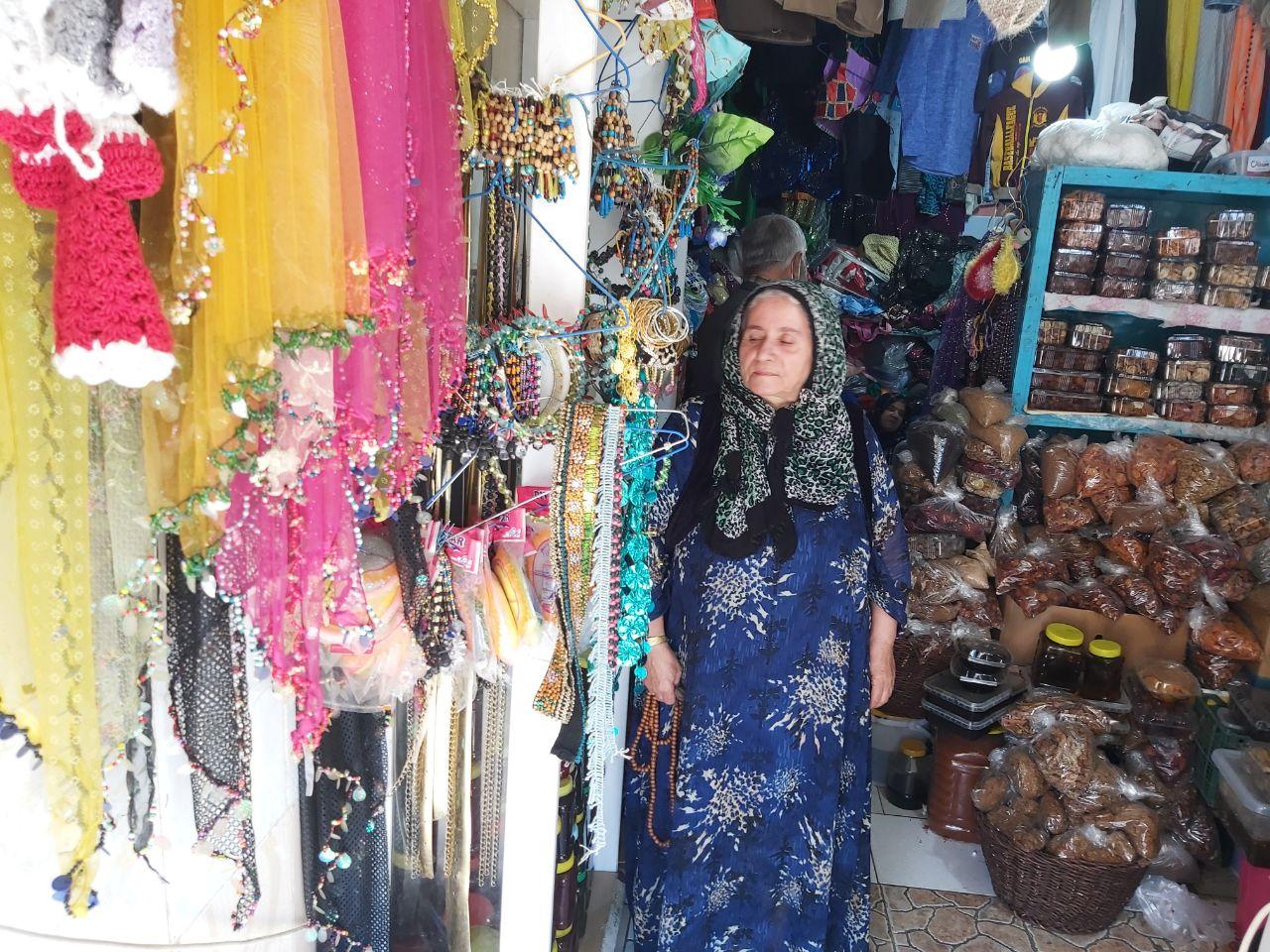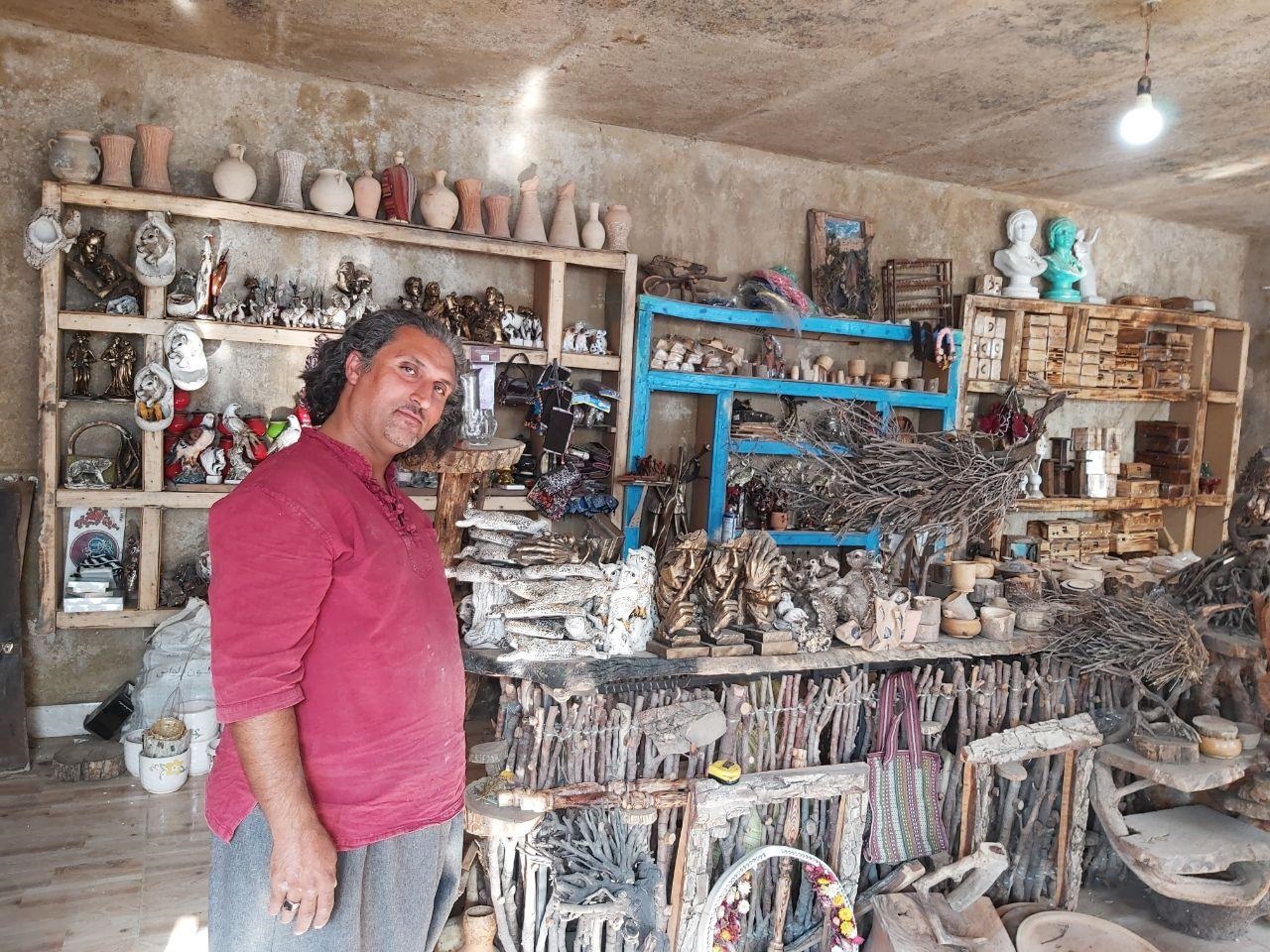HAWRAMAN, Iran — Mother-of-five Miryam Majidi says she does not quite understand what a potential registration of her region of Hawraman as a UNESCO World Heritage site would mean, but hopes the move will offset the financial damages she has incurred since the coronavirus pandemic hit Iran’s tourism industry.
At 65, Majidi has supported her family by selling her handicrafts to tourists visiting the picturesque mountainous region in western Iran for around 30 years. She has weathered the ups and downs of the tourism market, but says the industry has never seen anything like COVID-19.
“During recent years, we have undergone inflation, but in the last seven months, with the emergence of the coronavirus crisis, the financial pressure has reached its peak. It is such that we couldn’t sell a single thing due to the fact there were no tourists around to do any shopping,” said Majidi, who is currently the sole breadwinner in her family.
World heritage sites, according to UNESCO, are "of outstanding universal value to humanity" to be protected for future generations, and gain a level of international and legal protection. Current sites include the Taj Mahal and Macchu Picchu.
The arrival of a UNESCO assessor to villages in Hawraman on September 24 has attracted the attention of the media and locals hoping that the registration of their beloved region will help boost the faltering local economy and encourage the development of the area.
Hawraman is made up of hundreds of villages located not only in the Kurdistan and Kermanshah provinces of Iran, but also in parts of the Kurdistan Region of Iraq’s Halabja province.
“I just hope whatever is going to happen will help the financial situations of the people of this region" saying Miryam, carrying a long chain of prayer beads.
UNESCO assessor Hessam Mahdi is visiting the region for eight days, touring different villages.
A decision will be made on designating Hawraman a World Heritage Site based on the assessor’s final report and a vote by all 193 of the UNESCO member states next year.
Along the one-hundred-kilometer road from Sanandaj to Uraman Takht, the center of Hawraman region, poverty and unemployment issues can be seen everywhere.
In the village of Dezli, south of Mariwan, two young men had come from a village in Sanandaj to work as kolbars, semi-legal porters who transports goods across the mountains between Iran and the Kurdistan Region of Iraq. Salko Mohammad Zadah, 23 is a Muay Thai champion, who has taken part in several competitions. His friend Morad Ahmadi, 27, had joined him to make ends meet for his family.
Passing several well-designed and charming villages especially designed to reflect the natural beauty of the region, lies the tourist and cultural heart of the region, Uraman Takht, which feels more like a village than a city.
At the entrance to the village, there are several signs hanging to welcome the UNESCO assessor to the village, showing villagers’ happiness at Hawraman’s potential recognition as a cultural hub.
“First, I hope this introduces the culture and originality to the people all over the world. Secondly, I hope it paves the way for economic development for the sake of tourists who are coming back here, " said Mohsen Rahmani, 35, who has been selling goods in Hawraman for 15 years.
Mahdi praised Hawraman’s “rich” culture and architecture in a meeting with local preacher Qader Qaderi. According to Salam Paweh news agency, Mahdi emphasized the relationship between the “never-ending” relationship between Hawraman and nature, and stressed that he will report what he has witnessed to his superiors at UNESCO. Cultural officials from Kermanshah and Kurdistan agreed that the registration of Hawraman could bring fundamental changes to the area, helping to attract more tourists.
Efforts to help Hawraman’s registration with UNESCO has been warmly welcomed by Kurdish artists.
“I have been working with a group from UNESCO trying to register Hawraman. During my work with them, I have given them several important movies. I hope the registration will take place as soon as possible,” said Keiwan Majidi, a Kurdish director and filmmaker from Hawraman.
“In addition to the cultural and economic development brought by the international registration of Hawraman, support to restore the heritage of the area will increase. In cases of conflict, the international community will protect it by prohibiting the use of any kinds of weapons in the areas,” he added.
Towards the end of Uraman Takht and near Pir Shaliyar tomb, one of Hawraman's tourist attractions, is a wood-carving store.
“Though the global designation of Hawraman as a heritage site is good in itself, details about it should be given to the people because our experience with the change of Hawraman from a village into a city was unpleasant. Yet, we still maintain the village feel of Hawraman. It has become a city only in name. They stripped Hawraman of its ancient village features,” said shop owner Farid Razaei.
At 65, Majidi has supported her family by selling her handicrafts to tourists visiting the picturesque mountainous region in western Iran for around 30 years. She has weathered the ups and downs of the tourism market, but says the industry has never seen anything like COVID-19.
“During recent years, we have undergone inflation, but in the last seven months, with the emergence of the coronavirus crisis, the financial pressure has reached its peak. It is such that we couldn’t sell a single thing due to the fact there were no tourists around to do any shopping,” said Majidi, who is currently the sole breadwinner in her family.
World heritage sites, according to UNESCO, are "of outstanding universal value to humanity" to be protected for future generations, and gain a level of international and legal protection. Current sites include the Taj Mahal and Macchu Picchu.
The arrival of a UNESCO assessor to villages in Hawraman on September 24 has attracted the attention of the media and locals hoping that the registration of their beloved region will help boost the faltering local economy and encourage the development of the area.
Hawraman is made up of hundreds of villages located not only in the Kurdistan and Kermanshah provinces of Iran, but also in parts of the Kurdistan Region of Iraq’s Halabja province.
“I just hope whatever is going to happen will help the financial situations of the people of this region" saying Miryam, carrying a long chain of prayer beads.
UNESCO assessor Hessam Mahdi is visiting the region for eight days, touring different villages.
A decision will be made on designating Hawraman a World Heritage Site based on the assessor’s final report and a vote by all 193 of the UNESCO member states next year.
Along the one-hundred-kilometer road from Sanandaj to Uraman Takht, the center of Hawraman region, poverty and unemployment issues can be seen everywhere.
In the village of Dezli, south of Mariwan, two young men had come from a village in Sanandaj to work as kolbars, semi-legal porters who transports goods across the mountains between Iran and the Kurdistan Region of Iraq. Salko Mohammad Zadah, 23 is a Muay Thai champion, who has taken part in several competitions. His friend Morad Ahmadi, 27, had joined him to make ends meet for his family.
Passing several well-designed and charming villages especially designed to reflect the natural beauty of the region, lies the tourist and cultural heart of the region, Uraman Takht, which feels more like a village than a city.
At the entrance to the village, there are several signs hanging to welcome the UNESCO assessor to the village, showing villagers’ happiness at Hawraman’s potential recognition as a cultural hub.
“First, I hope this introduces the culture and originality to the people all over the world. Secondly, I hope it paves the way for economic development for the sake of tourists who are coming back here, " said Mohsen Rahmani, 35, who has been selling goods in Hawraman for 15 years.
Mahdi praised Hawraman’s “rich” culture and architecture in a meeting with local preacher Qader Qaderi. According to Salam Paweh news agency, Mahdi emphasized the relationship between the “never-ending” relationship between Hawraman and nature, and stressed that he will report what he has witnessed to his superiors at UNESCO. Cultural officials from Kermanshah and Kurdistan agreed that the registration of Hawraman could bring fundamental changes to the area, helping to attract more tourists.
Efforts to help Hawraman’s registration with UNESCO has been warmly welcomed by Kurdish artists.
“I have been working with a group from UNESCO trying to register Hawraman. During my work with them, I have given them several important movies. I hope the registration will take place as soon as possible,” said Keiwan Majidi, a Kurdish director and filmmaker from Hawraman.
“In addition to the cultural and economic development brought by the international registration of Hawraman, support to restore the heritage of the area will increase. In cases of conflict, the international community will protect it by prohibiting the use of any kinds of weapons in the areas,” he added.
Towards the end of Uraman Takht and near Pir Shaliyar tomb, one of Hawraman's tourist attractions, is a wood-carving store.
“Though the global designation of Hawraman as a heritage site is good in itself, details about it should be given to the people because our experience with the change of Hawraman from a village into a city was unpleasant. Yet, we still maintain the village feel of Hawraman. It has become a city only in name. They stripped Hawraman of its ancient village features,” said shop owner Farid Razaei.










Comments
Rudaw moderates all comments submitted on our website. We welcome comments which are relevant to the article and encourage further discussion about the issues that matter to you. We also welcome constructive criticism about Rudaw.
To be approved for publication, however, your comments must meet our community guidelines.
We will not tolerate the following: profanity, threats, personal attacks, vulgarity, abuse (such as sexism, racism, homophobia or xenophobia), or commercial or personal promotion.
Comments that do not meet our guidelines will be rejected. Comments are not edited – they are either approved or rejected.
Post a comment